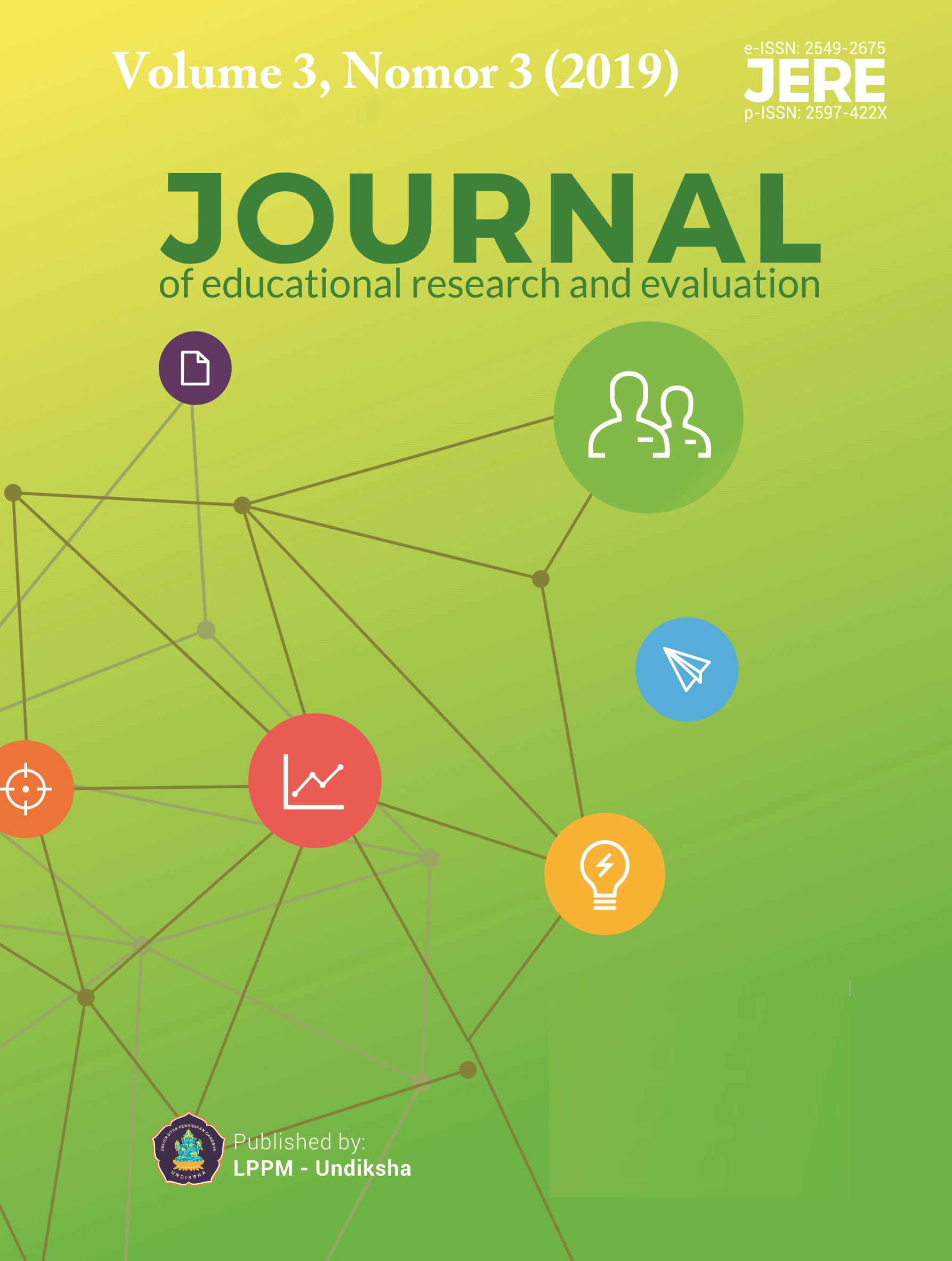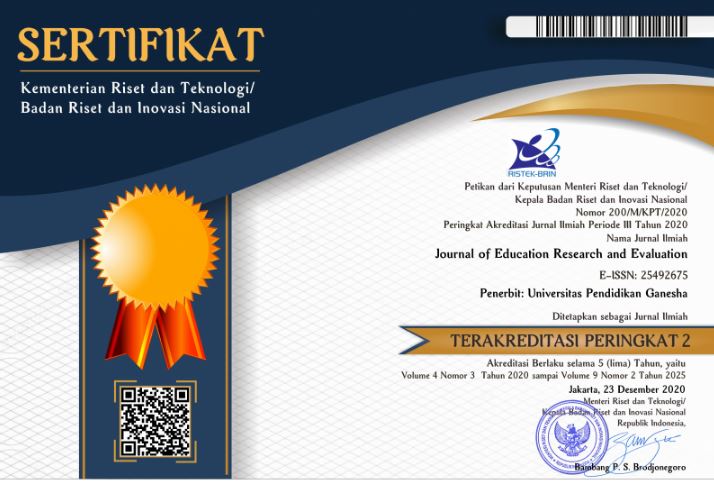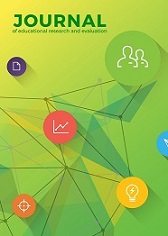Mind Mapping Technique with Think Pair Share Strategy Towards Writing Ability in Descriptive Text
DOI:
https://doi.org/10.23887/jere.v3i3.21851Keywords:
Mind mapping, writing, descriptive textAbstract
This research is applied to tenth graders of SMKN 1 Pungging to investigate the influence of teaching writing descriptive text ability using mind mapping technique with think pair share strategy. This population of this research is the tent graders that consist of 620 students which is taken 64 students as the sample. There are two classes; they are X TKJ 1 which is applied by teaching writing descriptive text using mapping technique with think pair share strategy and X TKJ 2 which is taught writing descriptive text by conventional technique. However, both of the groups were taught the same materials based on the curriculum. This study used pretest-posttest non-equivalent control group design for experimental and control groups. The pre test and post test were administered not only to the experimental group but also the control group. The pre test is as starting point to verify the condition of both groups. Finally, at the end of the treatment, the experimental group and the control group received a post test; the result of the post test was to define the significance difference between the experimental group and the control group. The result is there is significance difference between the classes which is taught writing descriptive text using mind mapping technique with think pair share strategy and which is taught writing descriptive by the conventional technique. The result calculated by SPSS 20.0; it is a computer program statistical calculation and the result is further discussed in Hypothesis Testing. It is approved that the mean of post-test of experimental group is increased from 58.28 to 80.16. It can be noticed that the mean of the post-test of experimental is 21.72 higher than the mean of post-test of control group.
References
Best, J. (1981). Research in Education. Prentice Hall,Inc.
Brown, H. D. (2001). Teaching by Principle (Second ed.). New York: A Pearson Wducation Company.
Brown, H. D. (2004). Language Assesment Principle and Classroom Practice. New York: Longman pearson education.
Buzan, T. (2012). How to Mind Map. Mind Map untuk meningkatkan Kreativitas . Jakarta: Gramedia Pustaka Utama.
Buzan, T. (2008). How To Mind Map: Mind Map untuk meningkatkan kreativitas. Jakarta: Gramedia Pustaka Utama.
Jack R. Fraenkel ; Norman F. Wallen. (2007). How to design and Evaluate Research in education. New York: Mc Graw-Hill.
Kemendikbud. (2016). Silabus Mata Pelajaran Sekolah Menengah Atas/Madrasah Aliyah/Sekolah Menegah Kejuruan/Madrasah Aliyah Kejuruan SMA/MA/SMK/MAK. Jakarta.
Lie, A. (2007). Cooperative Learning. Jakarta: Gramedia.
Nunan, D. (1991). Language Teaching Methodology. New York: Prentice Hall.
Raimes, A. (1993). Technique in Teaching writing. New York: Oxford University Press.
Richards and Renandya. (2002). Methodology in language teaching. cambridge University Press.
Rustler, F. (2012). Mind Mapping For Dummies. (T. Buzan, Ed.) A Jogn Wiley and son, LTD.
Sugiyono. (2017). Metode Penelitian Kuantitatif Kualitatif dan R&D. Bandung: Alfbeta.
Supadmi, N. L., Wiratma, I. G. L., & Merta, L. M. (2017). Penerapan Metode Mind Mapping Untuk Meningkatkan Aktivitas Dan Hasil Belajar Kimia Siswa Kelas X MIA. Jurnal Pendidikan Kimia Indonesia, 1(2), 48-52.
Susan, A. a. (2005). Second Language Research Methodology and Design. New Jersey: Lawrence Erlbaum Assosiation.
Ur, P. (2003). A course in Language Teaching Practice and Theory. Tranee book. (M. W. Wright, Ed.) Cambridge University Press.
Wahyuning, F., Priyambodo, E., & Sugeng, S. (2019). Penerapan Model Pembelajaran Think Pair Share (Tps) Pada Pembelajaran Kimia Untuk Meningkatkan Keterampilan Berargumentasi Dan Motivasi Belajar Siswa. Jurnal Pendidikan Kimia Indonesia, 3(1), 46-51.
Downloads
Published
How to Cite
Issue
Section
License
Authors who publish with the Journal of Evaluation and Research in Education (JERE) agree to the following terms:
- Authors retain copyright and grant the journal the right of first publication with the work simultaneously licensed under a Creative Commons Attribution License (CC BY-SA 4.0) that allows others to share the work with an acknowledgment of the work's authorship and initial publication in this journal.
- Authors are able to enter into separate, additional contractual arrangements for the non-exclusive distribution of the journal's published version of the work (e.g., post it to an institutional repository or publish it in a book), with an acknowledgment of its initial publication in this journal.
- Authors are permitted and encouraged to post their work online (e.g., in institutional repositories or on their website) prior to and during the submission process, as it can lead to productive exchanges, as well as earlier and greater citation of published work. (See The Effect of Open Access)











